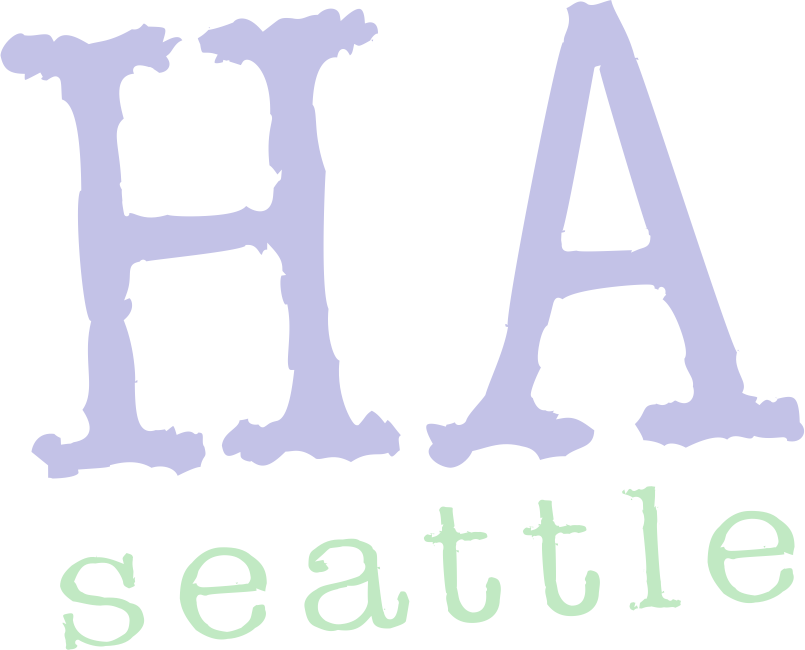Last week, I attended a press conference at the downtown Seattle offices of the ACLU with travel show host Rick Steves. Many people know Rick Steves from his television shows or his books, but one thing that many people don’t know about him is that he’s been a longtime advocate of reforming our marijuana laws. Having spent so much time in Europe, it’s given him a broader perspective on what works and what doesn’t when it comes to dealing with the problems of drug abuse and drug addiction. For example, in a country like Holland, where adults can walk into a licensed coffeeshop and purchase marijuana without penalty, fewer adults and teens use it than here in America, where we still try to send sick people to jail for using it as medicine on the false premise that doing otherwise would “send the wrong message to our kids”.
The contrast between the two approaches is clear for anyone who is willing to put aside the overwraught exaggerations of the dangers of this drug and simply look at the facts. Towards this end, Steves has set up a new website at MarijuanaConversation.org and released a half-hour infomercial-style video that discusses the history and the current state of this country’s war on marijuana. The video is available to Comcast Digital Cable subscribers through On Demand and will eventually be seen on some of the state’s major network affiliates. I’ve already seen the video myself, and I’m hoping that it reaches a wide audience in the state. Little of what was presented was new to me, but it will likely be surprising to those who’ve only learned about marijuana from sources with an incentive to maintain its illegal status.
The national prohibition of marijuana didn’t even begin until 1937 in this country. Before that time, and especially as far back as in colonial days, the hemp plant was a valued resource. It was used for ropes and sails and both The Constitution and the Declaration of Independence were written on hemp parchment. It wasn’t until the early 20th century that there were attempts to make hemp’s psychoactive relative, which had always been known by the term cannabis, illegal. A man named Harry J. Anslinger was put in charge of the new Federal Bureau of Narcotics, which was made up of a number of federal employees whose jobs were rendered useless by the end of alcohol prohibition in 1932. In an attempt to preserve those jobs, he proceeded to drum up a lot of fear about the use of cannabis. In order to draw on America’s racial fears, he began referring to it as ‘marihuana,’ which was the Mexican term for the drug. Despite opposition from a number of medical professionals, Anslinger’s propaganda campaign, which incredibly claimed that marijuana was “the most violence-causing drug in the history of mankind” actually worked, and it was made illegal through the Marijuana Tax Stamp Act of 1937.
While marijuana use at that time was fairly limited, the 60s brought about a massive increase in the drug’s popularity. It became a symbol of the counter-culture movement that was challenging many of the more socially conservative norms that developed through the Depression and World War II. When Richard Nixon was in the White House in 1970, he assigned a special commission to look at the dangers of this increased level of use and to recommend solutions. The Shafer Commission surprised Nixon by saying that marijuana is not very dangerous at all and recommending that it should be decriminalized. Nixon completely ignored the commission and launched what we now know as the modern “war on drugs.”
Today, nearly 100 million Americans have used marijuana, including our current and former Presidents, and numerous members of Congress. Yet it still remains illegal under federal law for anyone in this country to possess it or grow it. Over 800,000 people were arrested last year on marijuana offenses, over 700,000 for simple possession. Minorities, especially blacks, are more likely than whites to be arrested for possession and more likely to go to jail for it. While few of those 700,000 actually do serve jail time, the overall costs to taxpayers for maintaining this nationwide prohibition amounts from somewhere between $7 billion and $40 billion per year, depending on whether or not you try to factor in the potential revenue from taxing its sale. It is currently this country’s #1 cash crop.
As the generation who grew up in the 1960s nears retirement age, many of them have been finding that marijuana really does have the medical uses that the physicians in the 1930s said it did before being shouted down by Anslinger’s angry mob. Thirteen states now have laws that allow medical marijuana use when approved by a doctor, but the Bush Administration continues to deem those laws invalid under federal law, sending federal agents throughout those states to close down medical marijuana facilities that are legal under their respective state laws. Despite petitions and lawsuits, marijuana is still classified as a Schedule I drug, meaning that the federal government deems it to have no medical use and to be more dangerous than both cocaine and amphetamines. In another rebuke to that ridiculous classification, the American College of Physicians, a group of 124,000 doctors, gave their endorsement last week for the medical use of marijuana.
I’m hoping for the best when it comes to this effort by Steves to start a new conversation and to reach out to more people with the message that our approach to marijuana in this country is fundamentally flawed. There’s a major divide between how the politically active online community sees our marijuana laws and how it’s viewed among other demographics. I get very little disagreement when I discuss marijuana legalization online, even from many of the right-wing folks who disagree with me on almost everything else. The unnecessary cost to taxpayers and the overbearing nanny state aspect of the federal marijuana prohibition resonate with conservatives, while the racial disparities and the effects on voting eligibility and the lack of opportunity for those with past convictions resonate with liberals. But Steves’ message is powerful because it reaches another very large group: parents.
As anyone who’s ever watched his travel show knows, Rick Steves has a family, and a big part of why he’s doing this is because he sees our marijuana laws as a detriment, rather than a benefit, for his own kids. Like any good parent, he doesn’t want his children to be involved with marijuana. But through his travels, he’s discovered that our marijuana laws are extremely counterproductive on that front. By choosing outright prohibition instead of a model that allows for the strict regulation of its sale for adults, it’s actually much easier for children in this country to get marijuana than it is for them to get a bottle of whiskey or a pack of cigarettes. The person who sells marijuana doesn’t check ID and doesn’t face a strict penalty for selling to a minor. As a result, young people themselves often become part of the supply chain. This is something that happened during alcohol prohibition as well and was one of the big reasons why many people began to turn their backs on that failed social experiment. The special that he recorded hits this point extremely well and I imagine that it will resonate with a lot of parents in this country who have seen marijuana prohibition both as children and adults. While they certainly don’t want their kids to be involved with drugs, as one young mother in the audience noted, it’s much worse for a young person to have a criminal record. And that’s why it’s time to start this conversation now.
UPDATE: SeattleTammy sent me an email with a link to a review she wrote of Burning Rainbow Farm, one of the best books for grasping the sheer lunacy of marijuana prohibition. If you’re in Seattle and want a copy, head to Jackson Street Books and grab one.

